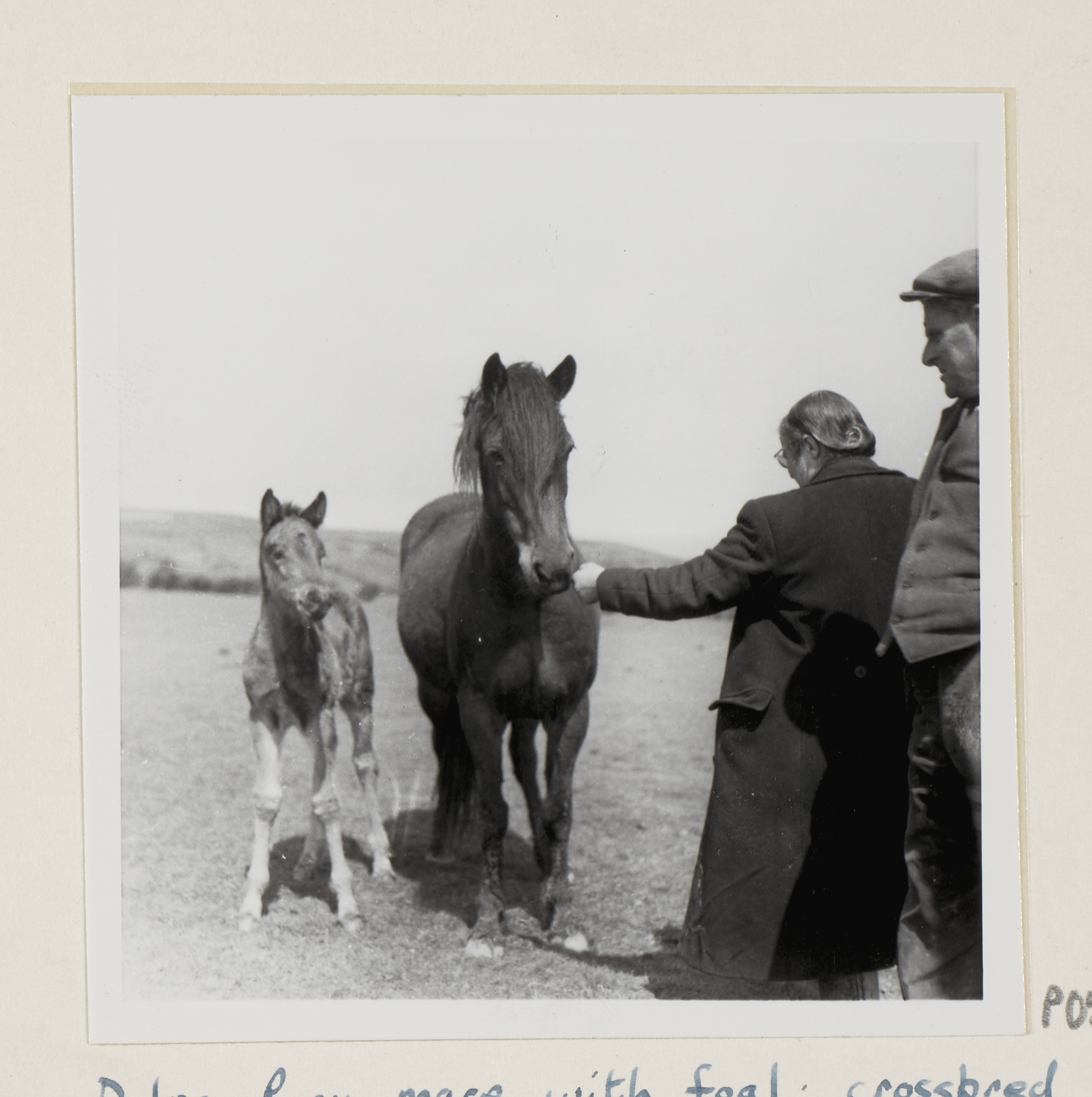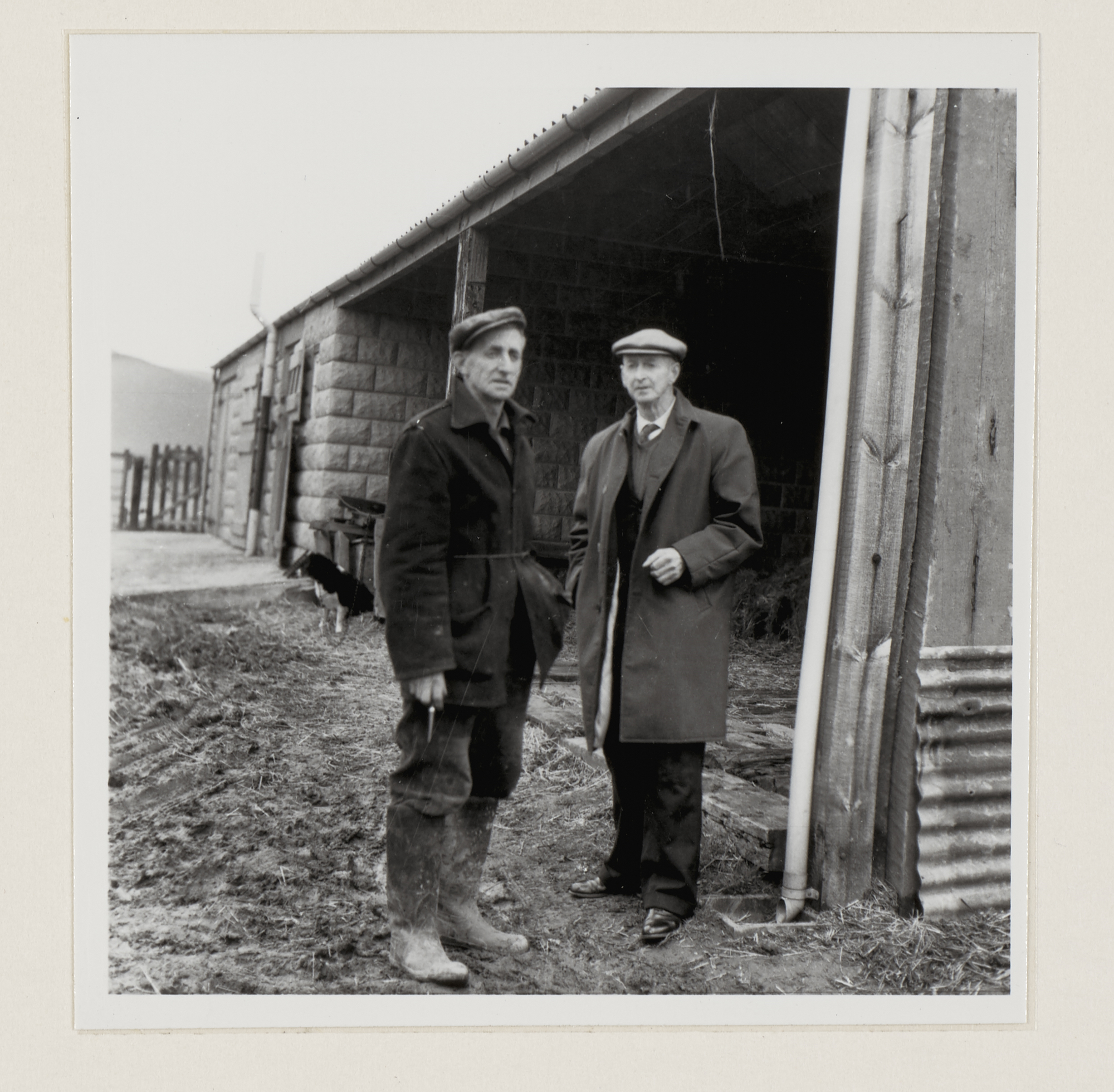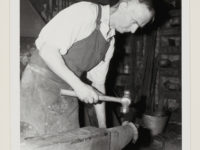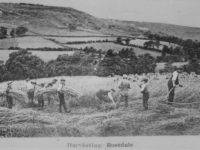Hutton-le-Hole in the North Yorkshire Moors is home to the Ryedale Folk Museum. Like much of the moors and moorland villages, until recently, Hutton-le-Hole has been dominated by agriculture and farming. Many dialect words in this area are linked to the industry.
Horse power

Horses hard at work.
Ryedale Folk Museum collection, 2008.5.2407
The Survey of English Dialects included a section on working horses and their equipment, and the fieldworkers who visited the North York Moors recorded interesting words like haltershank (tethering rope), barfan (horse collar) and galloway (a pony or small breed of horse).
Dialect informant, Harold Ross, told fieldworkers visiting Skelton in 1951 that the local name for a pony and trap was a galloway-and-pig. Across most of the moors, you wouldn’t harness a horse to a cart but gear it up, and here they wear blinders to protect their eyes, not blinkers. In some parts of the moors, if you scare your horse by accident, you will find it boggles (is afraid).
Some Survey informants bred their own horses on the moors, like Ruth Kitching from Fryup Gill Farm near Lealholm, pictured here with a Cleveland Bay mare and foal.

Pony and foal, Lealholm.
(LAVC/PHO/P0534) by Wille Brunk

Survey of English Dialects informants.
‘George Nelson and Frank Weatherill at Fryup Gill Farm’ (LAVC/PHO/P0536) by Wille Brunk
Blacksmiths and wordsmiths
Working horses need a blacksmith, and at one time you could find a smithy in nearly every village in the Moors. Blacksmiths played a vital role in rural life, not only shoeing horses, but also hooping cart and wagon wheels, and making tools used for farming. Here you can see blacksmith Eric Snaith from Danby making a horseshoe, and the forge at Ryedale Folk Museum. Eric is using a stithy (an anvil) to steady the horseshoe while he brays (beats) it with a hammer.

Blacksmith Eric Snaith making a horseshoe, Danby, 1967.
(LAVC/PHO/P0554) by Wille Brunk

Ryedale Folk Museum collection, 2008.5.8713

Haymaking in Farndale
Ryedale Folk Museum collection, 2008.5.3687
Hitting the hay
There are many traditional processes used at harvest time, but one would involve using sickles and lyes (scythes) to cut the shaffs (sheaves). If you needed to use extra force, you could wap (strike) it. If things required tying together in these parts, the rope would often be known as a band. Hopefully, your pay wouldn’t be poor addlings (small wages).

Harvest time in Rosedale
Ryedale Folk Museum collection, reference 2008.5.4651

Lowance Time on Threshing Day, Oxclose Farm, Hutton le Hole
Ryedale Folk Museum collection, 2008.5.2047
When it was time for a well-earned break while working up on the Moors, you’d take your lowance (allowance) time. This term is still in use on local farms to describe the allocated rest time to have lunch and a cuppa. You might call your lunch your lowance, or you might call it bait and keep it in a bait box.

A family picnicking in style out on the moor
Ryedale Folk Museum collection, 2008.5.2044
If your picnic was part of a family outing instead, you might take your bains (children) along too. If you were particularly unlucky, you’d get bitten by a cleg (a biting insect such as a horsefly).
Further afield – the milk round
An important aspect of rural life at the time of the Survey was dairy farming. Producing milk and supplying it to a whole community was exhausting work; in this recording, Charles Armstrong, interviewed in 1955, describes his morning routine of hand-milking thirteen cows before a hurried early milk round in Stokesley. The clip gives a wonderful example of a north-east Yorkshire accent; listen for the way Charles pronounces ‘make’ near the end – it sounds the same as mack. To emphasise how much work he had to do in a short time milking the cows by hand, he exclaims ‘hand milk, think on!’ – think on is a Yorkshire way of saying ‘remember’ or ‘mind you’.
Listen here
‘Clip from Sound Recordings, Lancashire and North Yorkshire’ (LAVC/SRE/A720r) by Stanley Ellis
A transcription for this audio can be found (here)
